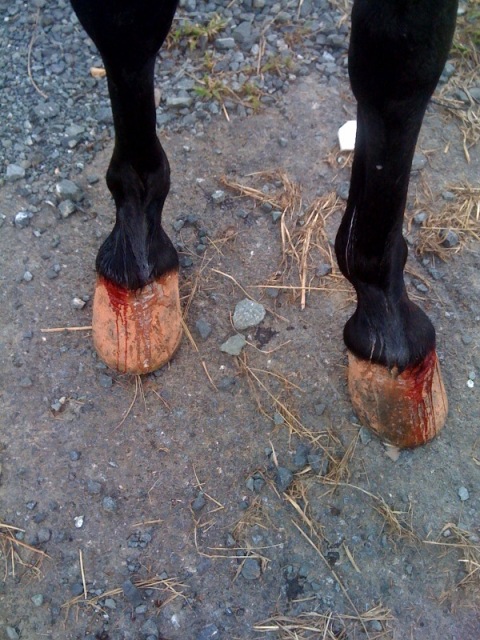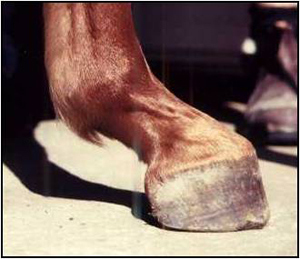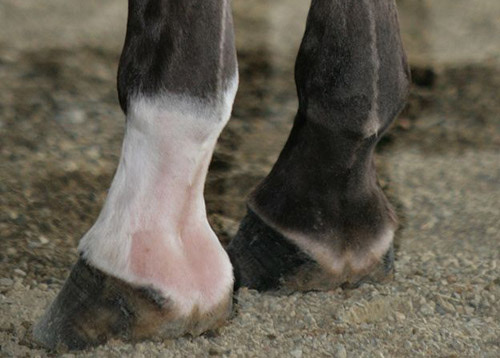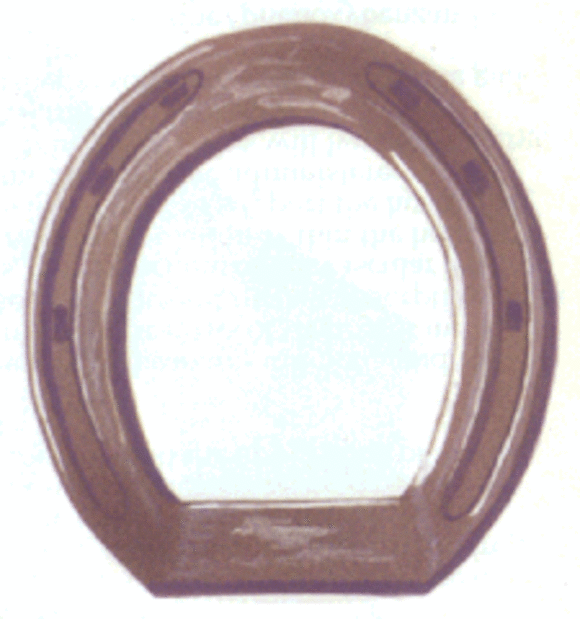QuestionHi
I have a 6year old Lucitano cross mare who has recently received an MRI for forelimb lameness. The diagnosis was significant bilateral forelimb lameness associated with injury to the distal sesamoid and associated structures of both front feet. Xrays showed no significant changes to the Navicular bone. The mare has never jumped or worked on hard ground and was only doing ground work and short hacks. I am therefore baffled as to how danage has occured. The problem I am having is how to treat this problem i.e shoes on, shoes off, continue to ride, retire etc. The mare is very spirited and lively and often looks sound when trotting around the field. Any advice would be appreciated. Many thanks Joanne
AnswerHi Joanne. First please allow me to apologize for the delay in my answer to you. We're having the interior of the house painted and this is the first chance I've had to get at my computer to reply.
I will preface to say that regardless of shod or barefoot the TRIM has to be balanced and level for the individual horse AND ... the individual hoof. Farriers would encourage you to try orthotic shoes while trimmers (including me) would encourage you to get the hooves trimmed up CORRECTLY and allow her to be barefoot. That being said there are also other factors to take in as to diet, environment (working and turnout) as well as the general healthcare of the horse. One cannot just "pull the shoes" and expect the horse to just walk off and be fine. Especially if the horse is stabled a great deal of the time.
The BEST therapy for the horse would be to m-o-v-e ... alot. Horses "naturally" (think ferals) move up to 20 and 30 miles a day!! Just in search for food and water. Foals are expected to be up and on their hooves, keeping up with the herd for all that movement, within 1/2 hr. or so after birth. The horse is designed to move ... every system in their bodies are "designed" around movement. Stalling with limited turnout really goes against all that nature has provided for the horse.
I understand that there are few who can keep their horses on hundreds of acres (the feral herds graze about 200 square acre territories)and, especially in the Northeast where I am, few even have little more than 2 acres. But 24/7 turnout with unlimited hay and forage is the best scenario for a barefooted horse. Hoofcare regularly scheduled within 4 - 6 week intervals to keep the hooves in balance; diet that is based on hay/forage with no sugar/low carb grains ONLY if required; a good, preferably organic, vitamin/mineral additive; plus a buddy or two to play and move with, goes a long, long way to not only keeping the hooves healthy but the mind and body healthy, as well.
One more thing .. imbalanced hooves can wreak HAVOC with the rest of the horse's musculo-skelatal system! So issues in joints can certainly be attributed to incorrect balance.

 Barefoot Rehab
QuestionBugsy.jpg
QUESTION: My 13-year-old Appen
Barefoot Rehab
QuestionBugsy.jpg
QUESTION: My 13-year-old Appen
 bleeding hooves
Question
bleeding hooves
hi Joepaul! I have attached a
bleeding hooves
Question
bleeding hooves
hi Joepaul! I have attached a
 club footed horse - advisable to buy
Question
club foot
Hi sir. We have an offer at t
club footed horse - advisable to buy
Question
club foot
Hi sir. We have an offer at t
 white legged horses - cracked heels
Question
white legged
hello, may i know why whit
white legged horses - cracked heels
Question
white legged
hello, may i know why whit
 eggbar shoes on horses
Question
bar shoe
hello sir, when can i use egg
eggbar shoes on horses
Question
bar shoe
hello sir, when can i use egg